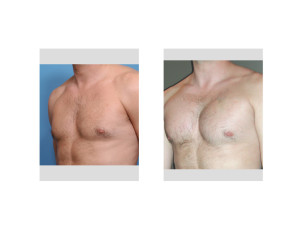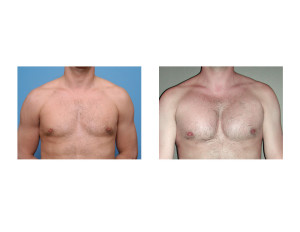Unlike facial implants, the use of body implants (excluding breast implants) has a much shorter surgical history. While the use of facial implants dates back more than five decades in plastic surgery, body implants have been done for less than two decades and in numbers that are just a fraction of that of face or breast implants.
One type of body implant is that used for pectoral or chest enhancement. Pectoral implants are used for a variety of chest shape concerns such as aesthetic muscle enhancement or in the correction of congenital deformities such as Poland’s syndrome. They have a very successful history in plastic surgery of favorable patient outcomes with a low risk of complications. But there are numerous misconceptions about pectoral implants so let me dispel a few of them.
A Pectoral Implant Is Not The Same As A Breast Implant. A breast implant is a two part medical device that has an outer silicone shell (bag) which contains either saline or a silicone gel. They have a limited span and will not last forever in any patient. One day the bag will develop a tear and the failed implant will need replaced. Conversely, pectoral implants are made of a solid silicone material that can not fail, rupture or break apart. Thus pectoral implants are permanent medical devices that will never need to be replaced due to structural implant problems.
There have been a few cases across the U.S. where surgeons have made the inexplainable decision to use breast implants for male pectoral augmentation. While that would be appropriate for transgender (male to female) breast augmentation, only solid pectoral implants should be used for male chest enhancement.
A Pectoral Implant Is A Muscle Implant. What is unique about most body implants is that they are designed to do muscle augmentation and are really ‘muscle implants.’ They are usually shaped like the muscle they are designed to enhance. Although they are solid implants they are very soft and flexible and will essentially feel similar to the muscle they are designed to enhance. They are made of a low durometer silicone material which allows for tremendous flexibility without tearing or fracturing the implant.


Pectoral Implants Are Placed Through High Axillary Incisions. As part of a successful pectoral implant surgery, the incision to place the implant should be hidden. The only place to insert a pectoral implant is through an incision way up in the armpit or axillary region. While the incision will be slightly longer than that used for placing breast implants, incisions in the armpit usually heal very heal to the hair follicles and sweat glands that are present in the skin.
Dr. Barry Eppley
Indianapolis, Indiana



